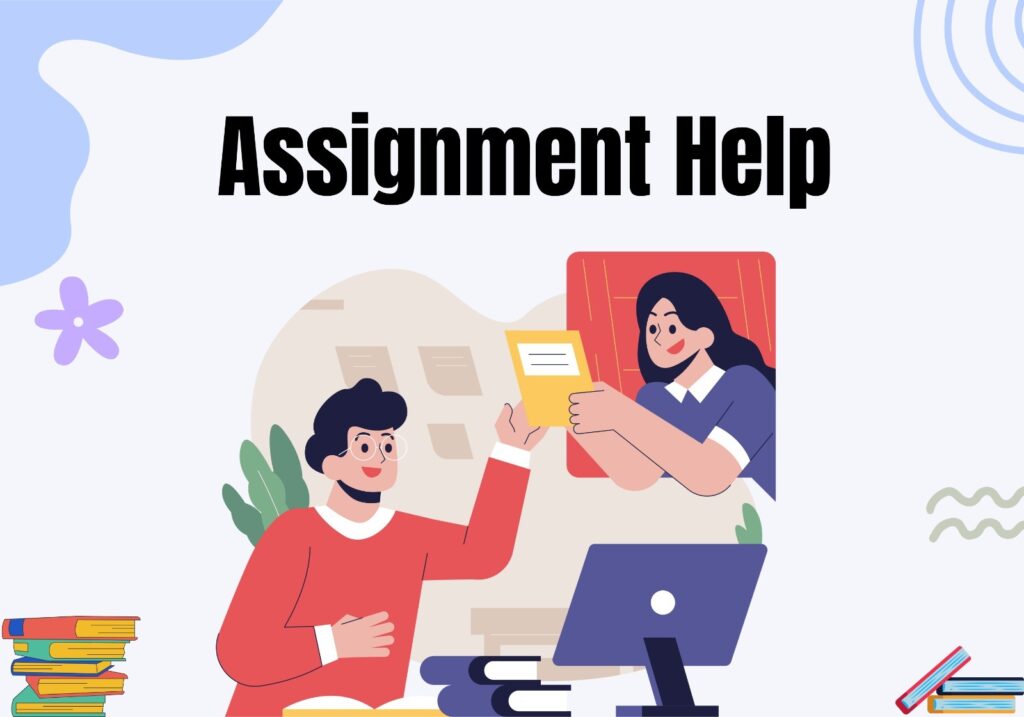Staying focused during extended study sessions is a mission impossible—especially when distractions abound and motivation wanes halfway through a textbook chapter. Preparing for exams, course work, or trying to beat tight deadlines, keeping focus at its best is always a challenge. Fortunately, with the right strategies, attention span can be increased, studied more intelligently, and even retained what one is studying. If long-term studying is an integral part of the daily schedule, mastering focus becomes not just a good thing, but a requirement. This guide condenses the best student-approved practices to stay focused, perform better, and avoid burnout.
Oh—and if things get too much, there’s no shame in asking assignment help along the way.
Why Long Study Sessions Can Be So Tiring
Let’s consider why long studying has such an impact on students. It’s not just the amount of time spent sitting at a desk. It’s a combination of mental fatigue, poor planning, distractions, and sometimes a lack of nutrition or sleep.
Here’s what typically destroys study sessions:
- Unstructured blocks of time
- Social media multitasking
- Lack of objective
- Over Reliance on cramming
- Physical discomfort (poor posture, hunger, eye strain)
Recognition of these habits is the first step to their elimination. Below are practical, evidence-based methods to break them.
Planning for Success: Structure Beats Willpower
Break Study Time into Intervals
One of the easiest and most effective ways of remaining focused is to learn in blocks of time, rather than trying to plod on for hours continuously. The Pomodoro Technique is a well-known technique:
- 25 minutes of hard study
- 5-minute short break
- After 4 iterations, take a 15–30-minute long break
This approach keeps the mind alert, avoids overloads, and has built-in rest points to avoid burnout.
Set Clear Goals Before Starting
Going into a study session without a plan is entering a blindfold maze. Start every block of study with a specific intention, for example:
- Complete summarizing a chapter
- Re-do major flashcards
- Draw a start for an essay
Predefined objectives keep the mind in concentration and allow progress to be measured with ease. It also helps reduce the number of assignment help due to last-minute chaos.
Minimizing Distractions in Study Environment
Choose Suitable Environment
Some people work best in silence, others in a bit of background noise. Consistency and minimal distraction are the key. Best study spaces are:
- Quiet libraries
- Pre-arranged study corners at home
- Noise-free cafés (with earbuds)
Avoid studying in bed or in any space associated with relaxation—it makes the brain get distracted.
Apply the “Phone in Another Room” Rule
Phones are likely the biggest focus-killers for students. Turning it off isn’t always an option (especially when using it to study), but here is a quick hack:
- Put the phone out of sight but not out of mind
- Turn on “Do Not Disturb” mode
- Display the current study target on the lock screen
This small hurdle keeps many from the temptation of endless scrolling and keeps the focus in the correct location.
Fuel for the Brain: Physical Wellbeing Affects Mental Performance
Don’t Miss Meals or Hydration
Nutrition and fluids have a direct influence on concentration and memory. On long sessions:
- Choose slow-release energy foods: oats, bananas, nuts
- Don’t have sugar highs and caffeine lows
- Keep a water bottle at the desk throughout the day
Even slight dehydration can impair cognitive function, so drink regularly.
Add Movement Breaks
Sitting for too long can actually decrease blood flow to the brain. A quick solution?
- Stretch every 30 minutes
- Take 5-minute brisk walks
- Attempt simple desk yoga
These breaks refresh energy, minimize physical tension, and enhance concentration when resuming the task.
Concentrated Study Methods for Deep Learning
Active Recall and Spaced Repetition
Instead of passively re-reading notes (which tends to result in zoning out), apply active recall:
- Put the book away and try to paraphrase what was just read
- Use flashcards to test comprehension
- Repeat the concept verbally as if teaching someone who is a beginner
Spaced repetition consolidates memory by reviewing information at increasing intervals. These methods are useful when jumping between various subjects.
Use Study Maps and Visual Aids
Mind maps, flowcharts, and diagrams engage learning and reduce temptation to daydream. They also allow linking ideas to each other for better long-term understanding.
Bonus: visual aids reduce reading amount, which is great for tired eyes.
Motivation Boosters: Tricks to Keep Going
Use the “Reward System”
Rewards train the brain to look forward to study time. Here’s how:
- Small reward after each completed interval (snack, song, short video)
- Larger reward after a full session (TV show, gaming session, social chat)
This gives organization breaks and something to look forward to during brutal sessions.
See Progress Visually
Having a whiteboard, track app, or notebook to check off completed tasks can be seriously rewarding. Feelings of accomplishment build momentum, reduce stress levels, and drive consistency.
It also helps in gauging when to seek assignment help if things are not progressing as anticipated.
Study Aids That Construct Focus (Distract Free)
Background Sounds and Music
For those who are noise lovers over quiet, instrumental playlists or ambient soundscapes can be good for concentration. Steer clear of lyrics or songs that connect with emotional memory—they have a tendency to draw attention away from the task at hand.
Some options are:
- Nature sounds (rain, waves)
- Lo-fi beats
- Classical music
Just be sure to keep volume low and even.
Timers, Checklists, and Study Logs
Simple tools such as timers and lists offer a feeling of structure and urgency. A study log can be employed to:
- Log start and finish times
- Mark what was completed
- Pinpoint focus highs and lows throughout the day
This helps to determine when focus dips and allows future sessions to be refined.
Mindset Shifts That Support Long-Term Focus
Ditch the Perfectionism
One of the major sources of procrastination is the belief that everything needs to be perfect. Actually, progress is greater than perfection. Acknowledge that:
- First drafts don’t need to be tidy
- Learning takes time
- Not all sessions will be fruitful
This mindset reduces stress and averts paralysis. And when perfectionism gets in the way, assignment assistance can step in to offer structure and clarity.
Accept Short-Term Discomfort for Long-Term Gain
Learning isn’t ever going to be fun, and that’s okay. Remembering that focusing requires mental work makes it easier to stick with it. Try this mental exercise:
“This feels difficult in the moment, but it’s temporary—and the rewards last a heck of a lot longer.”
This mindset shift helps get through difficult moments without frustration or guilt.
When to Take a Break—and When to Keep Going
Recognise the Signs of Burnout
Recognizing when to persevere and when to rest is significant. Red flags of burnout include:
- Finding it hard to take in information
- Rereading multiple times with no understanding
- Headaches or eye fatigue
- Irritability or fatigue
In such cases, rest or shift subject is best rather than trying. Studying when tired mentally tends to lose time and doesn’t retain as well.
Switch Tasks Rather Than Quitting Altogether
Instead of quitting a whole session, switch gears:
- From reading to outlining
- From writing to flashcards
- From theory to application
This continues to test the brain while still allowing for some recovery from task-specific fatigue.
Making Focus a Habit, Not a Fluke
Create a Consistent Study Habit
The brain loves habits. Learning at the same time daily creates mental readiness and does away with resistance.
Morning, afternoon, or nighttime—find out what works and stick to it.
Rhythm decreases decisional fatigue and simplifies study habit to automatic, rather than effortful.
Revise and Get Used to the Weekly Rhythm
On Sundays (or whenever it’s easy), spend 10 minutes to reflect on:
- What strategies succeeded?
- When did focus happen the best?
- What should change?
This self-audit ensures upgrading of the ingrained work regimen and acquiring intelligence where assignment help might aid with remaining ahead.
Conclusion
Sustaining focus through extended study sessions isn’t about coercion or relying on motivation. It’s about establishing an environment, a habit, and a mindset conducive to profound learning and mental acuity. From time management tricks to movement pauses, from nutrition to active recall—there’s more that students can control in regards to concentration than they realize.Learning smart is not magic. It’s a strategy. And when that strategy calls for an extra boost of oomph, third-party support like Assignment in Need (assignnmentinneed.com) can offer the boost required to stay on track.The next time the mind starts to drift in the middle of a long study session, remember: focus is a skill, and as with any skill, it can be cultivated, sharpened, and mastered—with the right tools and mindframe.






